vii #1: 7 places to stay in Puglia
Welcome to vii, a weekly newsletter featuring an exploration into seven somethings. This week is the origin story of vii and a little bit about its birthplace.
This newsletter was the brainchild of an Italian roadtrip, conceived over dinner and drinks in Locorotondo, and so the natural place to start with the first instalment is some reflections on this summer’s first time visit to Puglia, or Apulia as it’s known locally.
As a first time visitor to the region, I’m not going to pretend that these are the best places to stay in. How could I possibly say that with confidence after a mere 15 days away? But I can say that this was a trip that was well-researched and we had minimal regrets - it’s one that I would repeat, given the chance, in a heartbeat.
So let’s get into it. Anyone arriving by plane is going to arrive into one of two cities, Bari or Brindisi. The route we took could be adapted based on either as a starting point but given we flew into Bari and didn’t pass through Brindisi at all, there’s going to an element of bias. Regardless of arrival time, a night staying in the closest city always feels like a great way to acclimatise ahead of a road trip. For the inexperienced driving abroad, myself amongst them, minimising the distance you need to travel in your new hire car is advisable!
BARI
Bari, like many of the cities we visited, has an old town, Bari Vecchia which extends into the adjacent neighbourhood of Murat. If you’re not staying for long, it’s a great location to base yourself and explore on foot. This is a good time to mention that many of the old towns also have what is known as a ZTL (zona a traffico limitato), restricting vehicles from entering during certain hours. It’s something to be aware of when booking accommodation (especially if you have a car) but also enables you to wander around a little more freely without worrying too much about getting run over when your nose might be pressed against a camera and admiring the sites.
Exploring the streets of Bari Vecchia, you’ll discover the Basilica San Nicola, as well as the striking theatres - Teatro Margherita and Teatro Petruzzelli. If you fancy a hydration break or somewhere to spend aperitivo hour, you won’t go far wrong with La Ciclatera sotto il mare. Set back from the Lungomare which hugs the coast, you get all the benefits of sea views and breeze but without being on a main road.
VALLE D’ITRIA
For many visitors to Puglia, the Itrian valley or Valle d’Itria will be a must visit and one of the hardest decisions you will face will be where to stay. Do you choose the countryside surrounded by trulli houses or do you opt for one of the many beautiful towns in the area? I think a large part of the decision in terms of country or city is how you want to spend your evenings. Towns at night always have a different atmosphere than during the day and it offers you another opportunity to get lost in the narrow streets, with plenty of choice for drinks and dinner. I’m an indecisive individual so rather than settling on just one place to stay, we split our time in the region between Ostuni and Locorotondo, with both places being somewhere we wanted to spend more than part of a day in.
OSTUNI
Ostuni is often known as the White City, la città bianca, and you’ll spot the limewashed buildings of the old town rising from the surroundings as you approach it. The city and neighbouring area are known for their olive oil production and this is definitely something to look out for and try whilst here. There’s no shortage of masserias (farmhouses) that offer insights into the olive oil making process from seeing their groves of trees that are hundreds of years old right through to bottling the product.
The city of Ostuni itself has a very different feel depending on whether you’re in the compact and very walkable historical centre (centro storico) which takes a mere 15 minutes to circumnavigate versus the more expansive modern city. The old town features winding streets, stunning views of the surrounding countryside as well as the sea, and a mixture of architecture with the Duomo di Santa Maria Assunta, Ostuni’s cathedral, contrasting boldly with the more common white-washed buildings.
LOCOROTONDO
Whilst also a town that sits significantly higher than the surrounding valleys, Locorotondo has its own unique feel and one that feels a little more structured than the organic forms of old Ostuni. Chosen as much for its beautiful old town, a primary reason for us using Locorotondo as a base was its location. Situated in an intersection between other towns in the Itrian Valley, with infamous Alberobello and its UNESCO-recognised trulli houses to the west, Cisternino to the east, Fasano in the north and the town of Martina Franca sitting south of Locorotondo. It’s also a 30-40 minute drive to the nearby towns of Monopoli, Taranto and Grottaglie, making it an excellent jumping off point for exploring the area.
LECCE
Another city that provides great access to its surroundings in the far south of Puglia is Lecce in the peninsula of Salento. Whilst it offers the ability for day trips to Gallipoli, Otranto and driving the coast road to Santa Maria di Leuca, there is so much to discover in this city known for its baroque buildings and often likened to Florence.
Something I was really keen for in Lecce, as the biggest town/city we were staying in, was a food tour. We’d tried a handful of pugliese dishes like rusticò and orecchiette by the time we arrived in Lecce, but a walking tour is second to none as a way of familiarising yourself with a new place. In the space of a few hours we saw numerous sites and tried everything from frisella (think bruschetta) and pittule (fried dough balls) through to pasticciotto (shortcrust pastry filled with custard) and yet more gelato. On the subject of food and drink, Lecce has a great street food scene and we discovered arguably our favourite cocktail bar ever in the form of Quanto Basta. Impeccable drinks and service - our drinks recommendations are the Paint it, black and Pick(les) me up.
MATERA
The next city is technically a short detour out of Puglia as it sits in neighbouring Basilicata. I don’t know a single person who has travelled to Puglia that didn’t have Matera on their radar. And for good reason, it’s truly incomparable (especially if you happen to visit during a festa!)
The city is a stony iceberg. So much of Matera is hidden beneath the surface with cave dwellings which have been inhabited since the Palaeolithic era. Some of these caves house churches that were built into the rock and decorated with frescoes that are now hundreds of years old. Above ground, a meandering maze of streets snakes through the two sassi of old town Matera. The city has come a long way since being the shame of Italy in the mid-20th century, it’s now acknowledged as a UNESCO world heritage site and was crowned European city of culture in 2019.
A little aside on the subject of religious festivals… Italians take their celebrations seriously. And my advice to you, if you ever find yourself somewhere that is marking a special occasion, get involved and dive in headfirst because it could be a once in a lifetime experience for you.
We were in town during festa della Bruna which is an annual celebration in Matera on 2nd July. It features bright lights, live music and processions with knights on horseback. The celebrations conclude with the destruction of an ornamental papier-mâché chariot that was central in the earlier processions, followed by a dazzling display of fireworks above the duomo. Whilst every festival is slightly different, there will definitely be common elements and, above all else, it will be truly memorable.
GARGANO
Moving on to the final location and somewhere the majority of individuals wrongly don’t make time to visit on their first trip to Puglia. You could definitely spend much longer than we did in the peninsula of Gargano, a national park that boasts mountains, forests and a stunning coastline. If you venture north of Bari, driving with the sea on your right, you’ll discover a landscape quite unlike any other in Puglia.
Whilst each location so far on the holiday has had its own unique feel, the bright turquoise Adriatic sea had only been reserved for day trips and the green foliage of the Foresta d’Umbra is that much more vibrant compared to the muted shades of the previously common sightings of gnarly olive tree groves. The national park offers lots to explore from towns by the sea and their ancient trabucchi (old fishing contraptions) to towns perched atop mountains with views that will take your breath away to twisting roads through the forest leading to trails that are more off the beaten path.
THE LAST PLACE TO STAY
The last place to stay is less of a literal one and more a piece of advice - stay focused just as much on the journey as on the destination. That, after all, is the true beauty of a roadtrip. You’re able to day trip, to deviate and delve into the less popular places that you won’t necessarily see recommended to you. I can guarantee you there are core memories there just waiting to be unlocked!
I’ll be exploring more of those days out and deviations in an upcoming newsletter so don’t forget to
if you haven’t already. But in the meantime, here are some key phrases that might help you when you find yourself off the beaten track!
A BONUS 7
My most-used Italian phrases
Ciao! // Hi!! Bye!! … Salve // hello … Buongiorno // good day
Grazie (mille) // thank you (very much) … Prego // you’re welcome
Scusi, parli inglese? Non parlo italiano // excuse me, do you speak English? I don’t speak Italian
Un tavolo per due, tre, quattro… // a table for 2, 3, 4…
vorrei il conto per favore // I would like the bill please
Quanto costa…? // how much is it?
Dov’è… il bagno, il spiaggio, il ristorante // where is… the bathroom, the beach, the restaurant
For everything else, Google translate is your best mate!
Our route for 14 nights:
Bari (1 night)
Ostuni (2 nights)
Lecce (4 nights)
Locorotondo (2 nights)
Matera (2 nights)
Mattinata (3 nights)

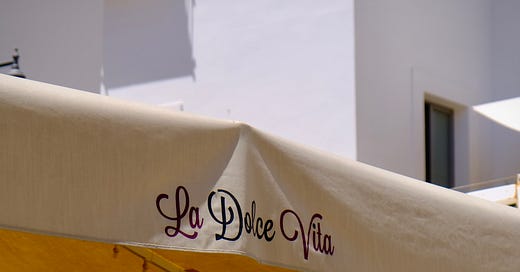





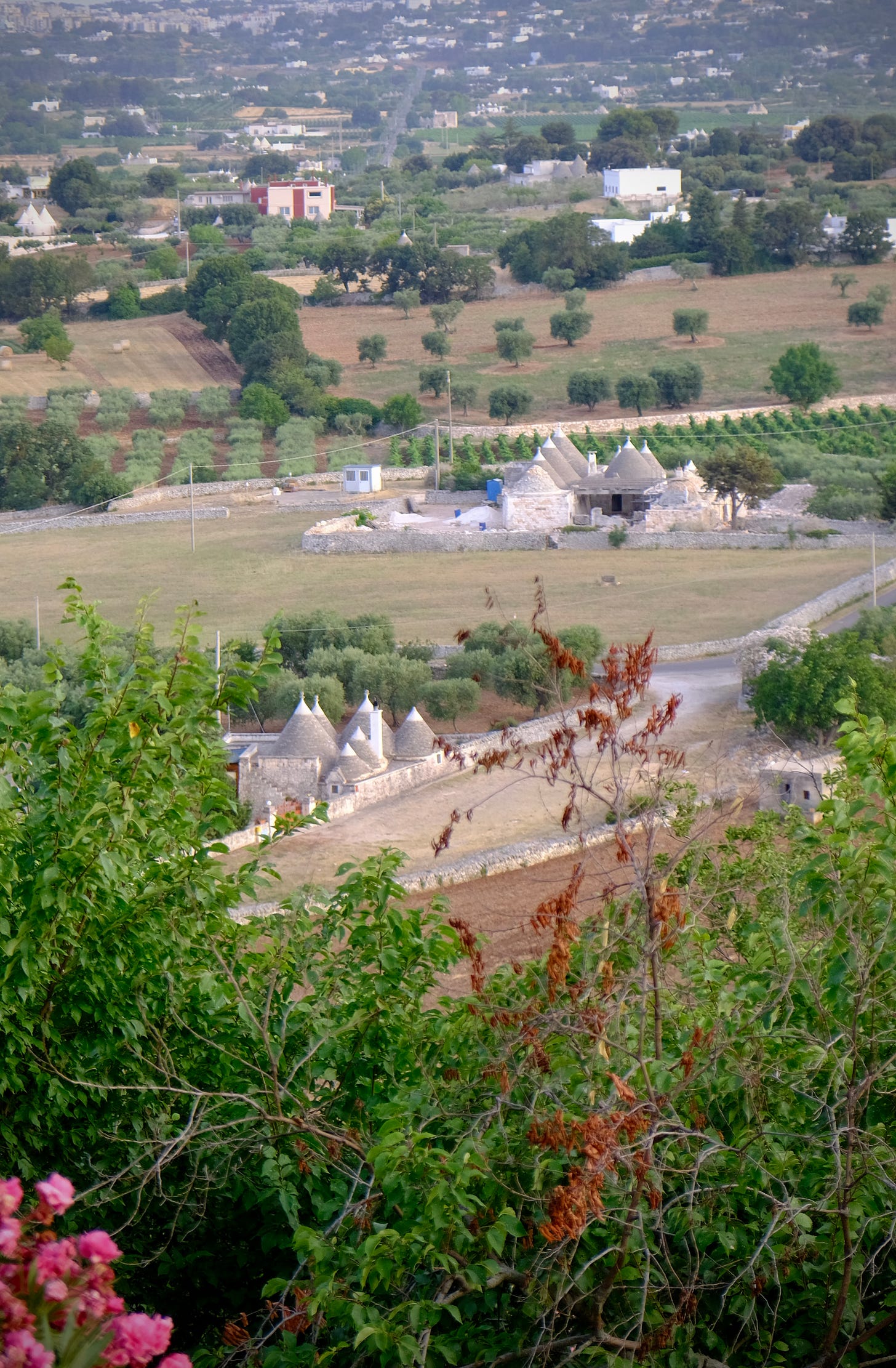
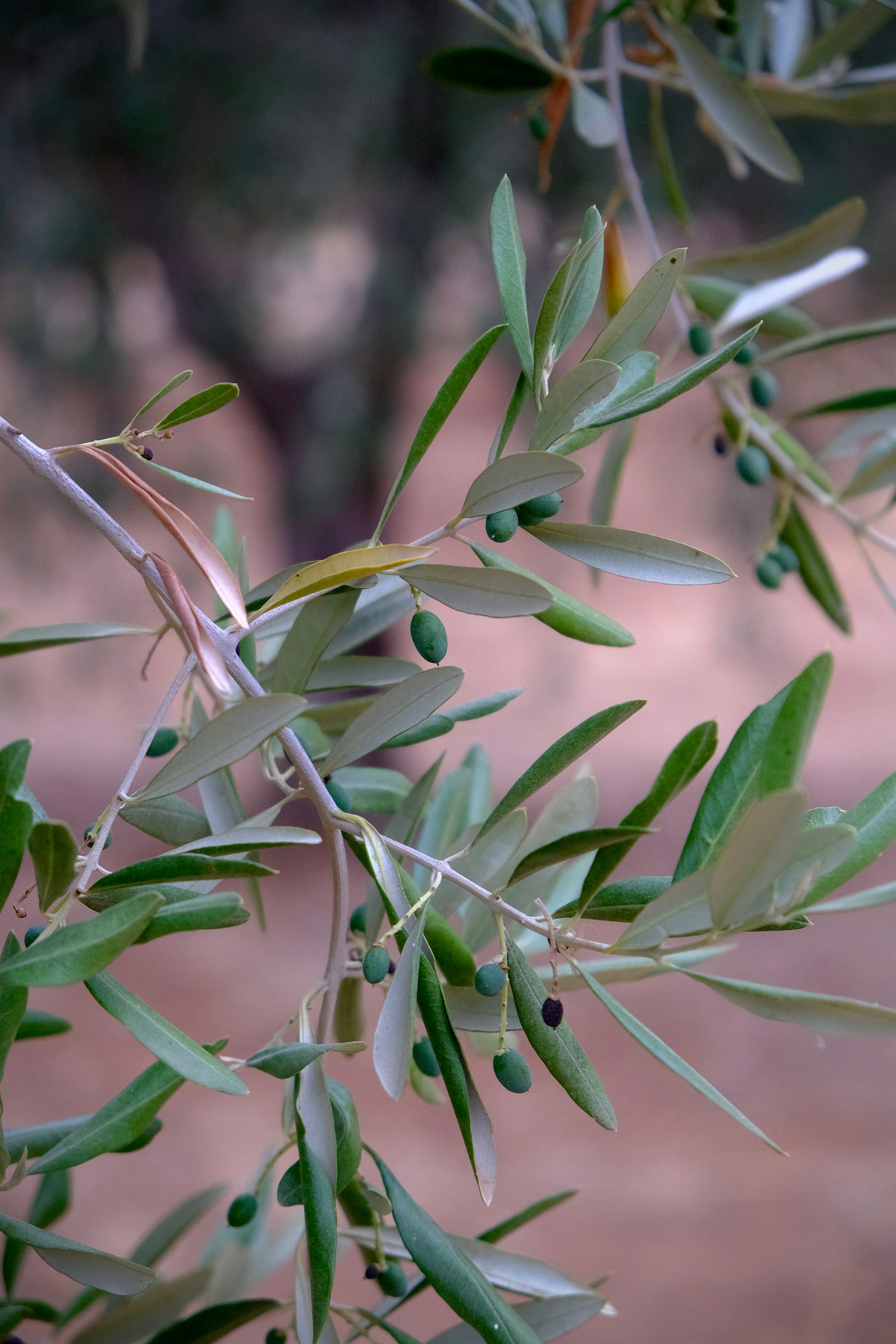







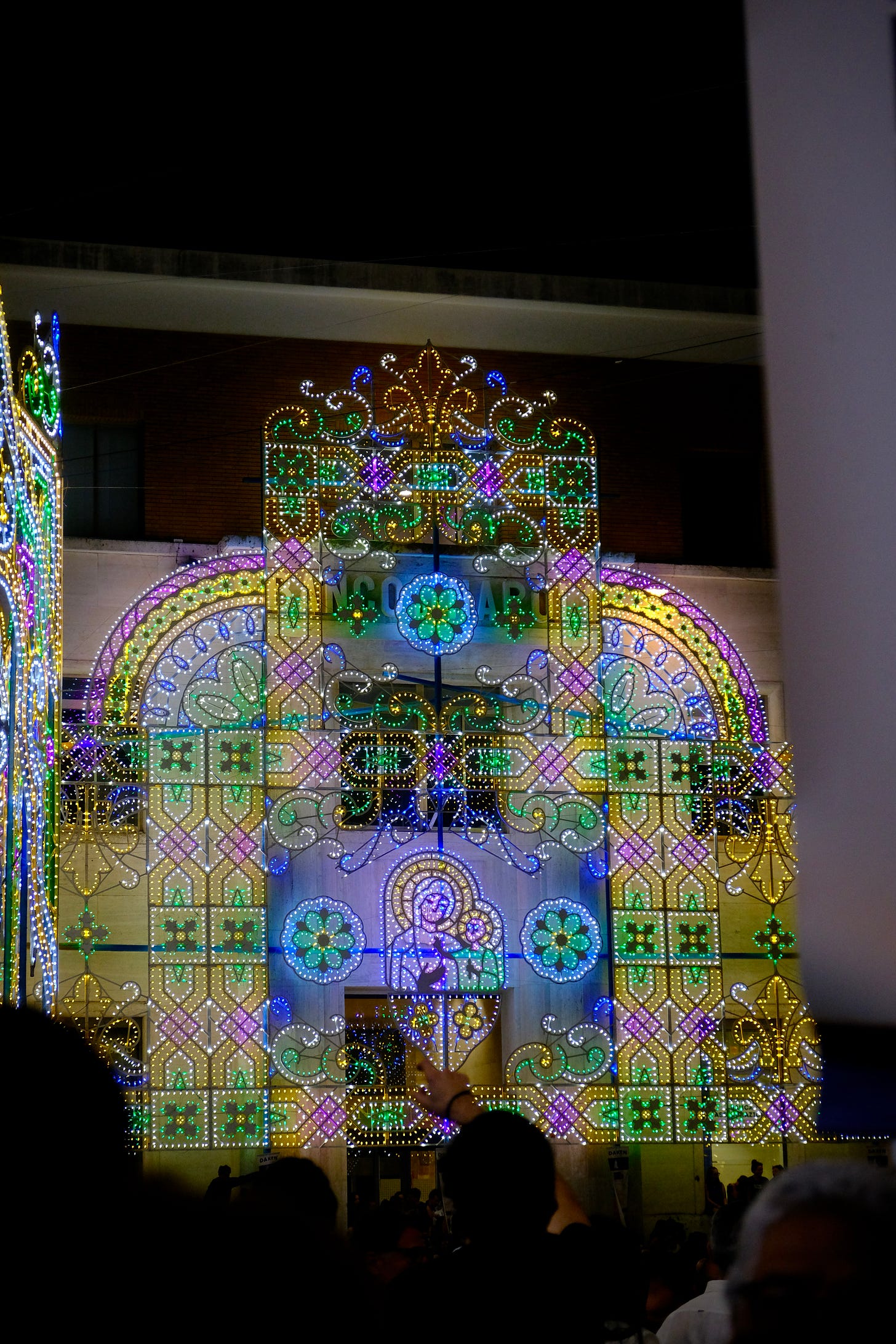

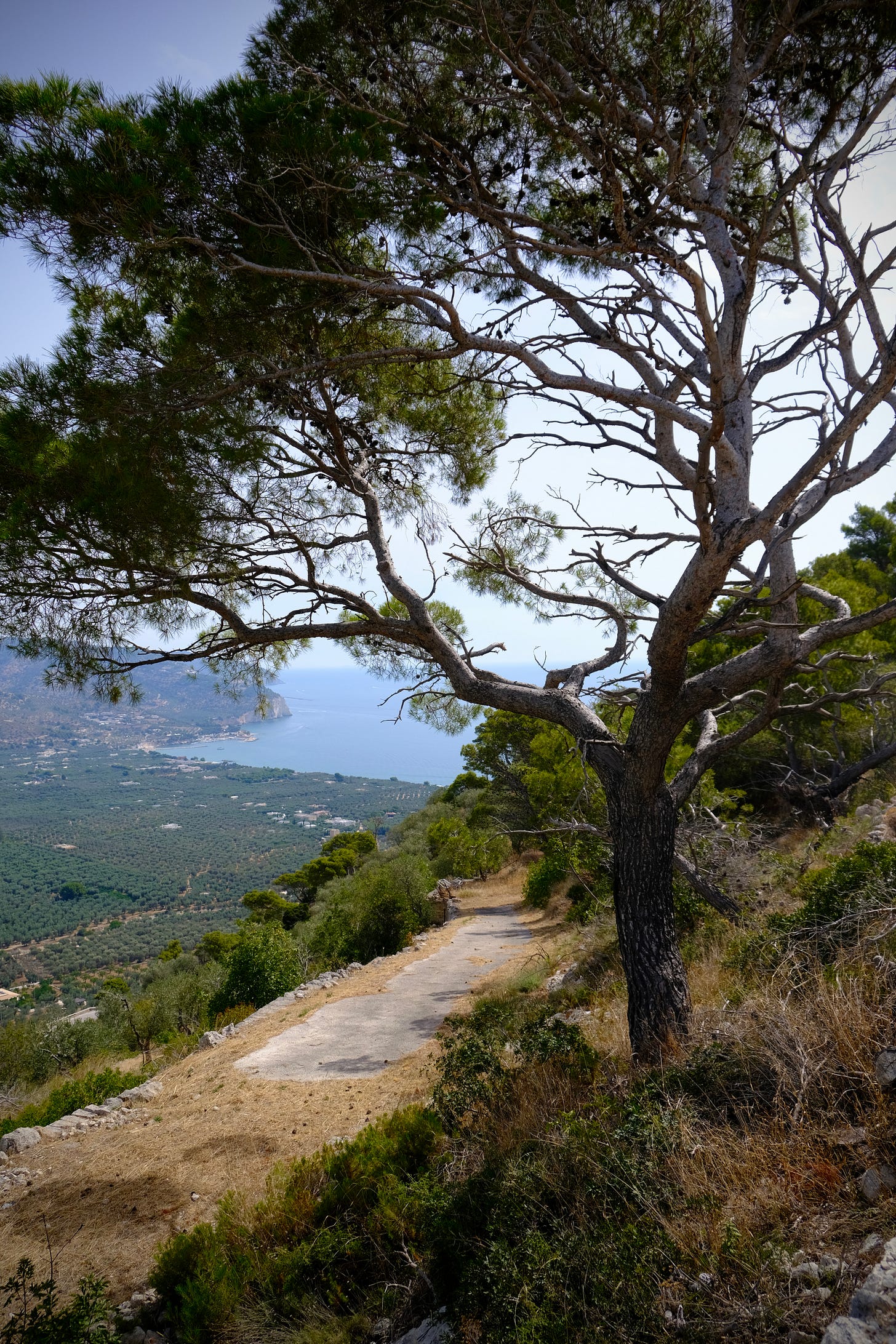

Incredible reflections and an amazing read!
Also, fun fact: Matera is the town where No Time To Die was filmed during that long shoot out in the hills and the scene in the Aston Martin where James Bond thought he was betrayed by Madeleine Swann.